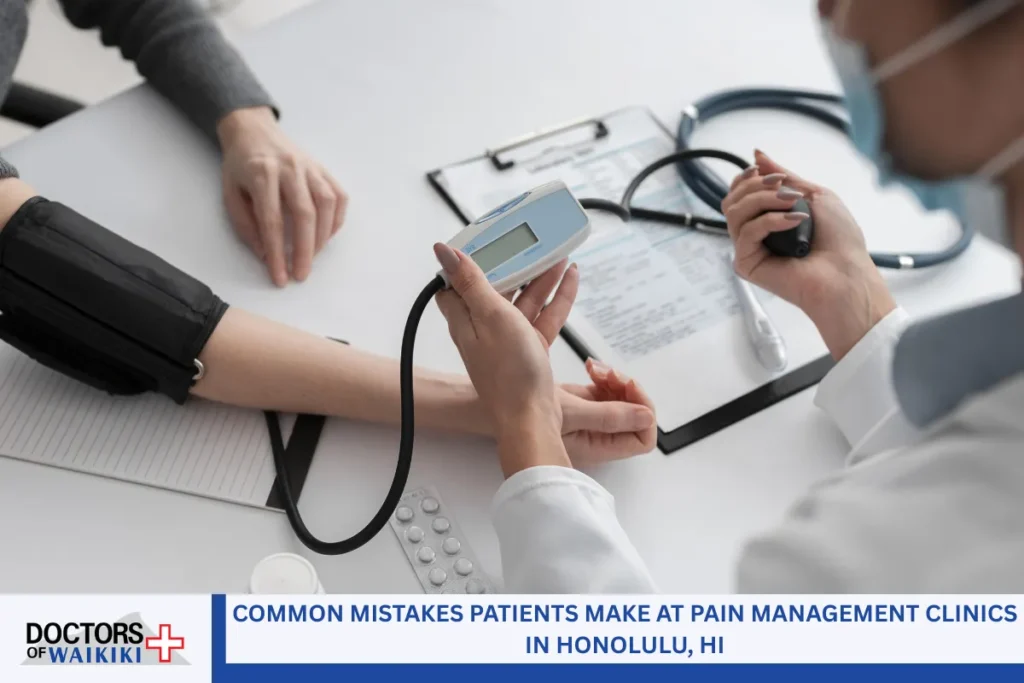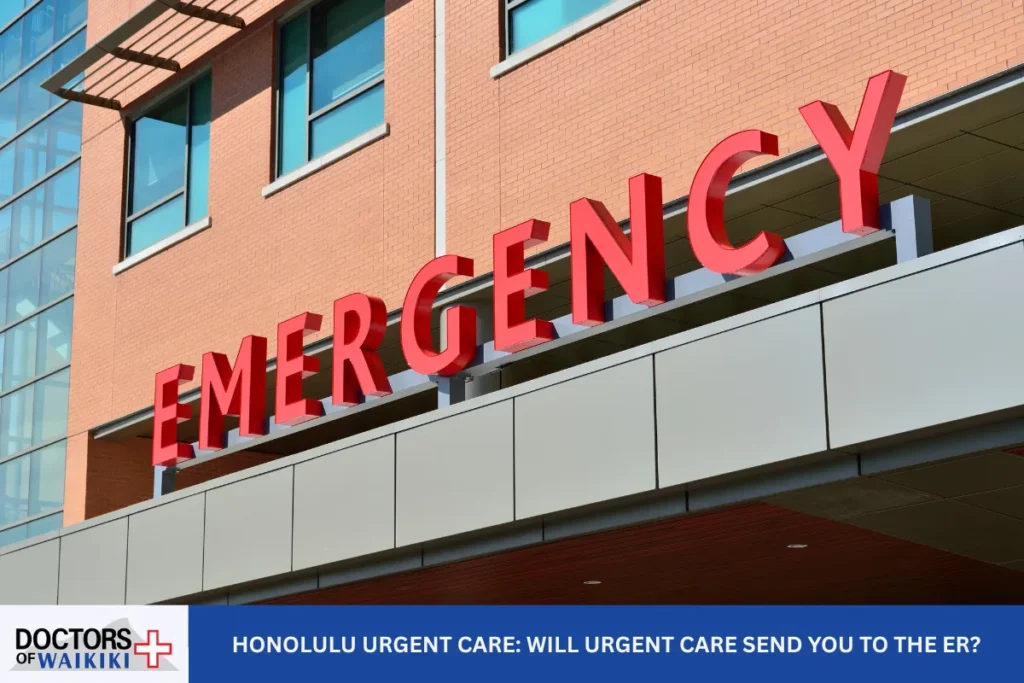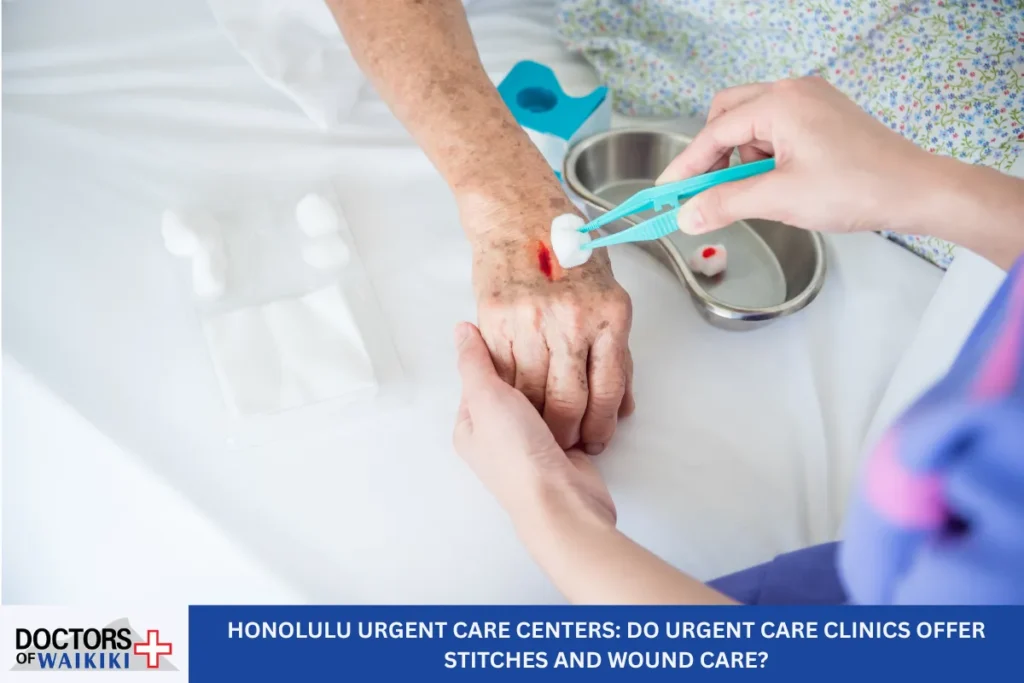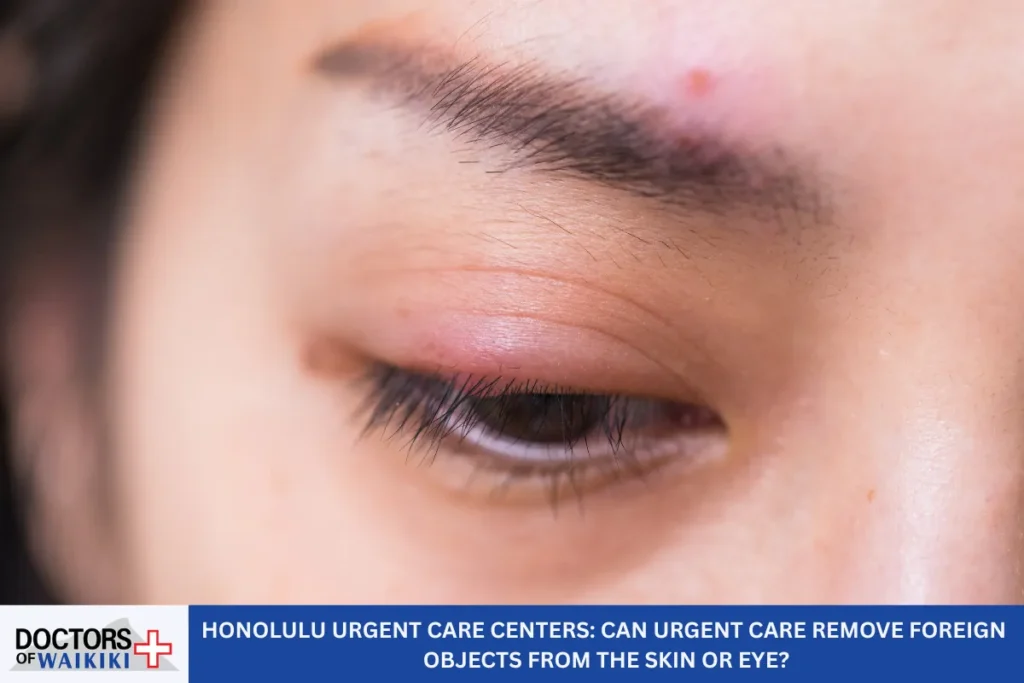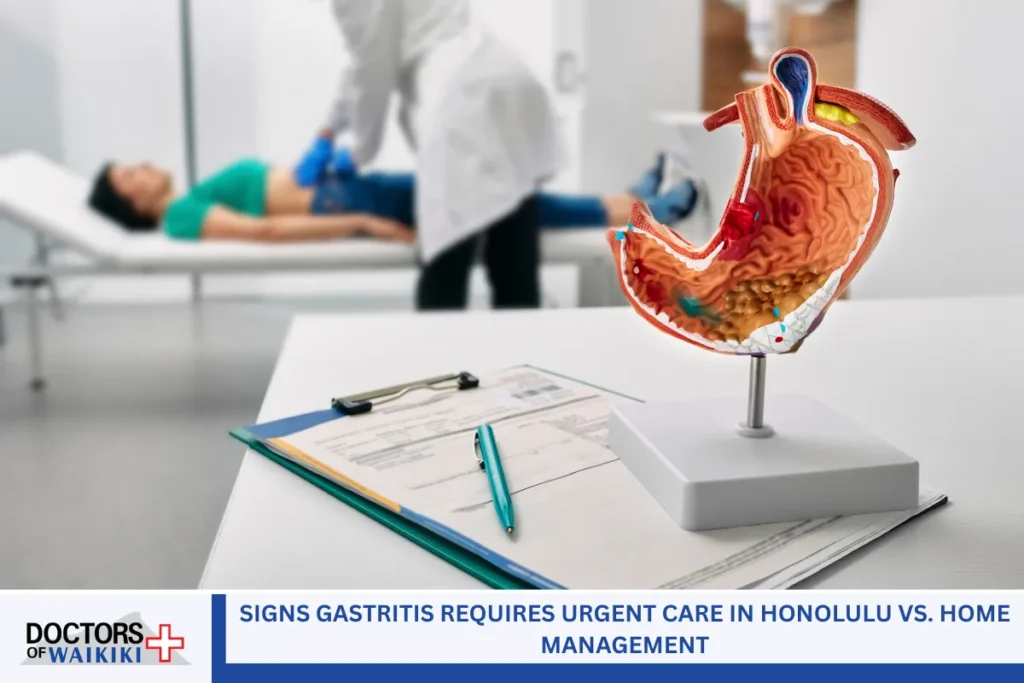Pain management in Honolulu is essential for those dealing with chronic or acute pain. Still, many patients make mistakes that can slow down their recovery or reduce the effectiveness of treatment. These common errors can lead to unnecessary delays or complications. By recognizing these mistakes, patients can enhance their treatment experience and achieve more effective results. This article highlights the most common mistakes patients make at pain management clinics in Honolulu and provides tips on how to avoid them.
In this blog, we will discuss these common pitfalls and offer advice on how to navigate the pain management process more effectively, helping you get the most out of your treatment.
Mistake #1: Delaying Treatment Until the Pain Becomes Unbearable

One of the most frequent mistakes patients make when managing pain is waiting too long to seek professional help. It’s not uncommon for people to attempt to manage pain on their own, hoping it will resolve naturally. However, by the time the pain becomes unbearable, it often signals that the issue has worsened or that a more complicated treatment approach is now required. In Honolulu, early intervention is crucial as it can lead to a more effective and faster recovery process.
Why Early Intervention is Crucial
Delaying pain treatment can lead to complications, including the possibility of chronic pain conditions that are harder to treat. When pain is addressed early, it’s easier to find a solution that prevents long-term damage and supports long-term healing. Patients in Honolulu, particularly those dealing with musculoskeletal pain, nerve pain, or injuries, should not wait for pain to escalate. Seeking help early can often lead to less invasive treatments and faster relief.
Key Signs That You Should See a Pain Management Specialist
Persistent pain that interferes with your daily activities, such as walking, sleeping, or working, is a strong indication that it’s time to see a pain management specialist. Any pain that lasts for several weeks or doesn’t improve with basic rest or over-the-counter medications should be evaluated by a professional.
Mistake #2: Not Following the Treatment Plan Consistently

Another mistake that many patients make in Honolulu is not following their treatment plan consistently. After receiving initial relief from pain, some patients might stop or alter their prescribed treatment plan without consulting their doctor, assuming that their pain has been fully managed. However, consistently following your prescribed treatment plan is essential to achieve long-term pain relief.
The Importance of Consistency in Treatment
Pain management often involves a combination of therapies, including medications, physical therapy, and lifestyle changes. Skipping doses or not adhering to appointments can reduce the effectiveness of the treatment and may lead to a relapse of pain. It’s important to trust the process, even if you start feeling better. Completing the full course of treatment ensures better control over your pain and supports long-term recovery.
Adjusting Treatment Plans Safely
If you feel that your current treatment plan isn’t working as expected, always consult your doctor before making any changes. Your healthcare provider can help adjust your treatment in a way that’s safe and effective, which could lead to more targeted pain relief. Never make changes to your medication or therapy without professional advice.
Mistake #3: Overlooking the Importance of Lifestyle Changes

Pain management goes beyond medications. It involves a holistic approach that includes changes to lifestyle, exercise, diet, and even mental well-being. Unfortunately, many patients overlook these aspects, focusing only on medication and physical therapy while neglecting the other important factors that contribute to recovery.
How Exercise Can Help Relieve Pain
Exercise plays a crucial role in managing pain, particularly for those dealing with chronic conditions like arthritis or back pain. Regular physical activity, such as walking, swimming, or even yoga, helps strengthen muscles and improve flexibility, which can reduce pain and prevent future flare-ups. In Honolulu, numerous outdoor activities, such as walking along the beach, offer both physical benefits and emotional relief.
The Role of Diet in Pain Management
What you eat can have a significant impact on how your body responds to pain. An anti-inflammatory diet rich in vegetables, fruits, whole grains, and healthy fats can help reduce pain and inflammation. In Honolulu, incorporating local, fresh foods like fish and tropical fruits into your diet can promote healing and overall health.
Sleep and Pain Management
Getting enough restful sleep is also critical when managing pain. Lack of sleep can heighten pain sensitivity, making it more difficult to cope with chronic pain. Ensure that you prioritize your sleep and establish a relaxing bedtime routine to support your body’s natural healing process.
Mistake #4: Neglecting Mental Health

Pain management isn’t just physical—it also includes addressing emotional well-being. Many patients in Honolulu overlook the mental health aspect of pain management, which can have a profound effect on how pain is perceived. Anxiety, depression, and stress can all intensify pain, making it harder to cope.
Why Mental Health and Pain Are Interconnected
Mental health issues can directly influence how we perceive and experience pain. Conditions like depression or anxiety often heighten the sense of discomfort, leading to a cycle of negative emotions and more severe pain. Addressing mental health concerns through therapy, mindfulness, or stress management techniques is essential for breaking this cycle.
Managing Stress to Alleviate Pain
Stress management techniques, including meditation, deep breathing exercises, and even mindfulness, can significantly reduce pain perception. Many pain management clinics in Honolulu offer programs that integrate both physical and mental health, helping patients manage their pain more effectively.
Mistake #5: Inadequate Communication with Healthcare Providers

Effective communication with your pain management specialist is key to receiving the best treatment. Unfortunately, some patients feel embarrassed or uncomfortable sharing all the details of their pain experience, which can result in incomplete treatment.
What You Need to Share with Your Doctor
To ensure the best treatment outcomes, it’s important to be open with your doctor about your symptoms, pain levels, and any side effects you’re experiencing from medications. Providing your healthcare provider with a comprehensive understanding of your situation will help them create a treatment plan that is specifically tailored to your needs.
How to Improve Communication with Your Doctor
Come prepared to your appointments with notes about your symptoms, any changes you’ve noticed in your pain levels, and a list of questions. Open communication ensures that your doctor can offer the most appropriate treatment and make necessary adjustments if required.
Mistake #6: Relying Solely on Medications

While medications are a critical part of pain management, relying solely on them may not be the most effective approach. Pain management clinics in Honolulu often offer a variety of non-pharmacological therapies that can complement medications and reduce the need for long-term drug use.
The Benefits of a Multi-Therapeutic Approach
Combining medications with alternative treatments, such as physical therapy, acupuncture, or injections, can enhance pain relief and promote healing. By utilizing a multi-faceted approach, patients are less likely to become reliant on painkillers and can achieve more sustainable relief.
Exploring Non-Pharmacological Pain Relief
Acupuncture, massage therapy, and chiropractic care are just a few non-drug therapies that may be helpful for patients in Honolulu. These therapies often complement traditional treatment methods, enhancing overall pain management.
Mistake #7: Skipping Follow-Up Appointments

Once patients begin to feel better, they sometimes skip follow-up appointments, believing that their treatment is complete. However, follow-up appointments are critical for ensuring that the treatment plan is working effectively and for making adjustments if necessary.
The Importance of Follow-Up Visits
Follow-up appointments enable your doctor to assess your progress, monitor for any complications, and verify that the pain management plan remains effective. Regular check-ins also provide an opportunity to discuss any new concerns or symptoms that may arise during treatment.
Ensuring Long-Term Pain Management Success
Staying committed to follow-up visits helps you maintain effective pain management and supports long-term recovery. It also ensures that any necessary changes to the treatment plan are made promptly, preventing a recurrence of pain.
Effective Pain Management Starts with Knowledge and Commitment
To achieve the best results from pain management in Honolulu, it’s important to be proactive in your treatment. Avoiding common mistakes, such as delaying care, neglecting lifestyle changes, and not communicating effectively with your doctor, can significantly enhance the success of your treatment plan. Remember, pain management is a comprehensive approach that requires patience, dedication, and a willingness to follow through with prescribed plans.
Effective pain management isn’t just about reducing pain in the moment—it’s about creating a long-term solution that supports your overall well-being. By avoiding these mistakes, you’ll be on your way to a better quality of life, free from the limitations of chronic pain.
Honolulu Pain Management – Doctors of Waikiki

Doctors of Waikiki is a modern, state-of-the-art walk-in clinic dedicated to providing comprehensive pain management services in Honolulu. Whether you’re dealing with chronic pain or need urgent care, our team is here to offer quick and effective treatment. Established in 2018, we specialize in a range of services, including general medical care, urgent care, and minor surgeries, ensuring that every patient receives the personalized attention they need.
Our clinic is open seven days a week, including holidays, and most of our staff members are bilingual, offering convenience and accessibility for both locals and visitors. Contact us today at (808) 922-2112 to learn more about how we can help you manage your pain effectively.
FAQ: Pain Management in Honolulu
1. What are the common treatments for chronic and acute pain?
Chronic pain and acute pain are managed through various pain care strategies. Pain specialists in Honolulu often recommend a multimodal approach, which includes medications, therapies, and interventional procedures. Here are common treatments:
- Medication management: Prescribing opioid medication for short-term relief or using neuropathic pain medications for nerve-related pain.
- Nerve blocks and spinal injections: Used to target specific pain pathways and reduce inflammation.
- Spinal cord stimulation: Helps reduce pain by interrupting pain signals traveling to the brain.
- Alternative therapies: Includes treatments like acupuncture, physical therapy, and trigger point injections for muscle-related pain.
A comprehensive pain assessment by a doctor ensures the correct treatment plan is devised based on your medical history and pain modalities.
2. How does a pain management doctor assess pain?
Pain specialists employ various methods to assess pain and determine the most suitable treatment. They often start by discussing the patient’s medical history, symptoms, and pain scale ratings to understand the nature of the pain. Key assessment tools include:
- Pain questionnaires: Used to evaluate the intensity and duration of the pain.
- Physical exams: Identify areas of sensitivity or altered pain perception.
- Imaging tests: Help pinpoint the source of pain, such as problems with the spine or joints.
Doctors may also assess central mechanisms in pain or neuroplastic changes in spinal cord neurones, which could be influencing pain pathways.
3. When should I seek a second opinion for my pain treatment?
If your pain isn’t improving or if you feel the prescribed treatments aren’t working, it’s a good idea to seek a second opinion. This is particularly important for:
- Chronic pain that hasn’t responded to standard treatments.
- Patients who are considering interventional pain procedures like Epidural Back Injections or spinal injections.
- Those who may have concerns about long-term use of opioid medication or who want to explore alternative therapies for pain relief.
Seeking a second opinion ensures that you’re on the right treatment plan and that your doctor-patient relationship remains effective.
4. How do lifestyle factors impact pain management?
A nutrient-rich diet, sleep & rest, and regular physical activity play significant roles in managing pain. For instance:
- Diet: A balanced diet rich in anti-inflammatory foods can help reduce sensitization of pain pathways.
- Sleep: Poor sleep can worsen neuropathic pain and affect your ability to cope with pain.
- Exercise: Regular physical activity helps to improve muscle strength, flexibility, and overall well-being, reducing the intensity of pain.
Incorporating self-management skills into your daily routine can provide additional support in managing both acute pain and chronic pain.
5. What are interventional pain procedures?
Interventional pain procedures are used to treat pain when medications or physical therapy alone are insufficient. These treatments are typically used for conditions involving the spine or nerves. Common procedures include:
- Nerve blocks: Target specific nerve roots to alleviate pain.
- Spinal injections: Deliver anti-inflammatory medication directly to the source of pain, such as the spinal discs.
- Trigger point injections: Used for muscle-related pain or spasms.
- Epidural Back Injections: Relieve pain caused by conditions such as herniated discs or sciatica.
These procedures aim to interrupt pain signals and provide longer-lasting relief, particularly when pain pathways are altered.
Read more: Tips for a Successful Pain Management Visit in Honolulu, HI

